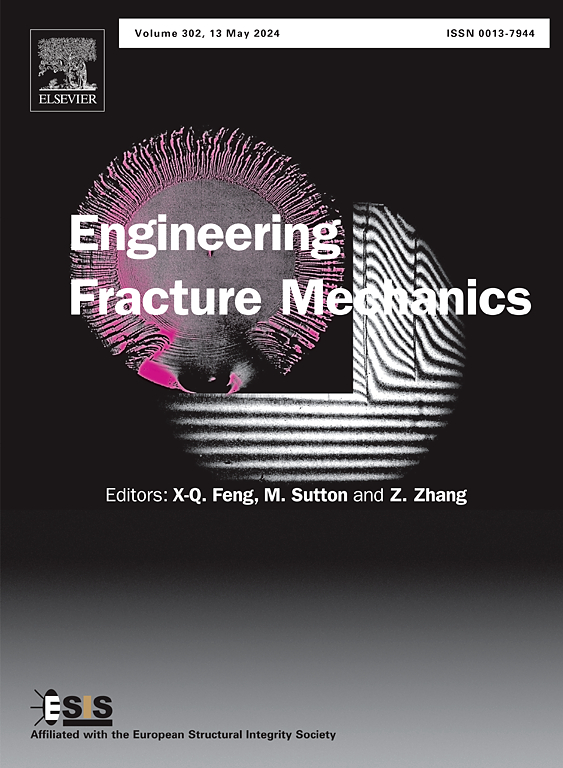The influence of cut edge heterogeneity in complex phase steel sheet edge cracking: An experimental and numerical investigation
IF 4.7
2区 工程技术
Q1 MECHANICS
引用次数: 0
Abstract
This study investigated how geometrical variations along the perimeter of sheared edges influenced the formability of advanced high-strength steel sheets during hole expansion. A combined numerical and experimental approach was employed, based on the standardised ISO 16630 Hole Expansion Test. The shear cutting process prior to cut edge forming was modelled using the Particle Finite Element Method, which enabled accurate prediction of edge morphology and deformation within the shear affected zone. The resulting geometries and residual fields were transferred to three-dimensional blank meshes for hole expansion simulations. A cold-rolled complex-phase steel was used, processed with varying cutting clearances to produce distinct edge conditions. Circumferential heterogeneities, including burr-to-no-burr transitions and irregular burnish patterns, were shown to significantly reduce edge formability and promote early crack initiation. These effects were found to be more detrimental than damage distributed through the thickness of the sheared edge. To represent such irregularities in numerical modelling, a hybrid meshing strategy was introduced, incorporating three-dimensional microscopy data into the simulation workflow. This approach improved the accuracy of predicted hole expansion ratios and allowed reproduction of experimentally observed fracture patterns. Stress analysis showed that geometric imperfections around the hole perimeter elevated local stress triaxiality and accelerated damage development. The findings emphasised the importance of achieving uniform cut edge quality to ensure reliable forming performance and reduce the risk of edge cracking during manufacturing.

切削刃非均匀性对复杂相钢板边缘开裂的影响:实验与数值研究
本研究探讨了沿剪切边缘周长的几何变化对先进高强度钢板在扩孔过程中的成形性能的影响。采用数值与实验相结合的方法,以标准化的ISO 16630孔膨胀试验为基础。采用颗粒有限元法对剪切边缘成形前的剪切切割过程进行了建模,从而能够准确预测剪切影响区内的边缘形态和变形。将得到的几何形状和残余场转移到三维空白网格中进行孔扩展模拟。采用冷轧复合相钢,用不同的切削间隙加工,以产生不同的边缘条件。周向非均匀性,包括毛刺到无毛刺的转变和不规则的抛光模式,显著降低了边缘的成形性,促进了早期裂纹的形成。这些影响被发现比通过剪切边缘的厚度分布的损伤更有害。为了表示数值模拟中的这种不规则性,引入了一种混合网格策略,将三维显微镜数据纳入模拟工作流程。这种方法提高了预测井眼膨胀比的准确性,并允许再现实验观察到的裂缝模式。应力分析表明,孔周周围的几何缺陷提高了局部应力三轴性,加速了损伤的发展。研究结果强调了实现均匀切割边缘质量的重要性,以确保可靠的成形性能,并减少制造过程中边缘开裂的风险。
本文章由计算机程序翻译,如有差异,请以英文原文为准。
求助全文
约1分钟内获得全文
求助全文
来源期刊
CiteScore
8.70
自引率
13.00%
发文量
606
审稿时长
74 days
期刊介绍:
EFM covers a broad range of topics in fracture mechanics to be of interest and use to both researchers and practitioners. Contributions are welcome which address the fracture behavior of conventional engineering material systems as well as newly emerging material systems. Contributions on developments in the areas of mechanics and materials science strongly related to fracture mechanics are also welcome. Papers on fatigue are welcome if they treat the fatigue process using the methods of fracture mechanics.

 求助内容:
求助内容: 应助结果提醒方式:
应助结果提醒方式:


